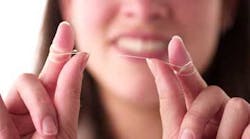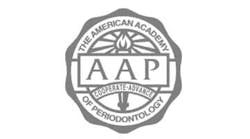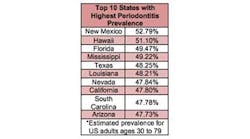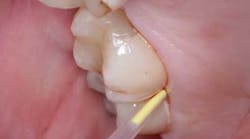The dental profession should practice more individual prevention. Oral health has not improved between 1990 and 2005, which is rather worrying according to the Ivory Cross Association (The Netherlands). Apparently alternative prevention methods are needed to realize oral health improvement. The Non-Operative Caries Treatment and Prevention (NOCTP) method, described in the PhD thesis "Optimizing Oral Health toward a tailored, effective, and cost-effective dental care" by Erik Vermaire shows an individually oriented preventive method that provides enormous health benefits: 70% fewer cavities in children of the study population. This huge health benefit was a reason for the Ivory Cross to support the creation of this thesis. Prevention promotion is the key task of the Ivory Cross Association. Therefore, the Ivory Cross Association decided to spread the knowledge from this thesis in a special, easily accessible, edition for all dental professionals, titled "Motivated patients with healthy mouths." The first copies of this magazine were handed out to guests at Vermaire’s PhD ceremony on Friday, May 24, 2013. That same day another 6,000 copies were mailed to all members and associates of the Ivory Cross Association.RELATED |Common child-care habits and their effects on pediatric tooth decay and children's healthDraw attention to achievable health benefits Apart from the dental team, policy makers, insurers, press, and government should be informed about this huge, achievable health gain. The publication describes the NOCTP method (this is the official name of the Nexø method: Non-Operative Caries Treatment and Prevention method); summarizes the thesis "Toward a tailored, effective ad cost-effective dental care"; explains how the Nexø model emerged; indicates that NOCTP is a pleasure to work with; shows that the advice given by the Ivory Cross is the guiding principle of the NOCTP; examines the effectiveness and efficiency of NOCTP; and its merit: motivated patients with healthy mouths. With the release of this publication the Ivory Cross hopes to motivate oral care professionals to consider using the NOCTP method in their daily practice and call upon the profession to apply more individual prevention.RELATED |Dairy does the mouth good: New dental research shows cheese may prevent cavitiesNew reimbursement system required The incentives for dentists within the current remuneration system are not primarily aimed at keeping teeth healthy, but for carrying out invasive interventions. That does not seem optimal and could be done differently. For example, by experimenting with so-called pay-for-performance (PFP) packages. In PFP systems, the remuneration of care providers is linked to the quality of the care provided. A new fee system would be needed to stimulate oral care professionals to practice more individual prevention.Individualize, based on risk assessment The purpose of the NOCTP strategy is to prevent cavities in children by an individual approach of the child, focused on self-care. The time interval of visits to the dental care practice is based on a caries risk analysis. Factors to be considered in the caries risk analysis are the caries activity present, the estimated participation of the parents and the child and the presence of erupting permanent molars. Also the risk classification as described in the Caries Prevention Opinion of the Ivory Cross could very well be used here.From a child's perspective Oral care providers are challenged to particularly look through the eyes of children. When NOCTP is applied, a child will be subjected to fewer invasive treatments, will not have to endure fluoride applications and will get fewer cavities. Also, the child will obtain more knowledge about oral health, will improve its oral hygiene, and parents will experience fewer issues with exercising daily oral care. The oral caregiver will become the mentor of the child: his or her coach. It is of the utmost importance that children and their parents learn to brush correctly. This is not always an easy job and requires a systematic approach. A successful systematic approach, based on the Nexø model, is described in the thesis of Erik Vermaire.Click on the covers below for a digital copy of the thesis (in English) and the magazine (in Dutch).









